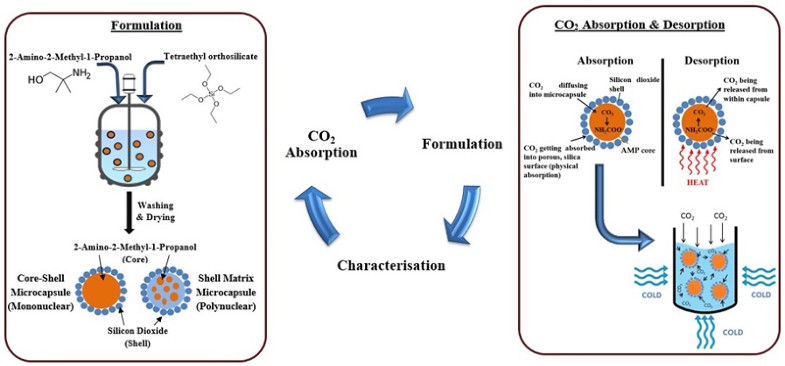Frontiers of Chemical Science and Engineering ( IF 4.3 ) Pub Date : 2019-11-21 , DOI: 10.1007/s11705-019-1856-6 Sidra Rama , Yan Zhang , Fideline Tchuenbou-Magaia , Yulong Ding , Yongliang Li
Carbon capture is widely recognised as an essential strategy to meet global goals for climate protection. Although various CO2 capture technologies including absorption, adsorption and membrane exist, they are not yet mature for post-combustion power plants mainly due to high energy penalty. Hence researchers are concentrating on developing non-aqueous solvents like ionic liquids, CO2-binding organic liquids, nanoparticle hybrid materials and microencapsulated sorbents to minimize the energy consumption for carbon capture. This research aims to develop a novel and efficient approach by encapsulating sorbents to capture CO2 in a cold environment. The conventional emulsion technique was selected for the microcapsule formulation by using 2-amino-2-methyl-1-propanol (AMP) as the core sorbent and silicon dioxide as the shell. This paper reports the findings on the formulated microcapsules including key formulation parameters, microstructure, size distribution and thermal cycling stability. Furthermore, the effects of microcapsule quality and absorption temperature on the CO2 loading capacity of the microcapsules were investigated using a self-developed pressure decay method. The preliminary results have shown that the AMP microcapsules are promising to replace conventional sorbents.

中文翻译:

原硅酸四乙酯对2-氨基-2-甲基-1-丙醇的包覆反应
碳捕集被广泛认为是实现全球气候保护目标的一项重要战略。尽管存在包括吸收,吸附和膜的各种CO 2捕集技术,但由于高能量损失,它们在燃烧后发电厂中还不成熟。因此,研究人员致力于开发非水溶剂,例如离子液体,结合CO 2的有机液体,纳米颗粒杂化材料和微囊化吸附剂,以最大程度地减少碳捕获的能耗。这项研究旨在通过封装吸附剂以捕获CO 2来开发一种新颖而有效的方法在寒冷的环境中。通过使用2-氨基-2-甲基-1-丙醇(AMP)作为核心吸附剂和二氧化硅作为壳层,选择了常规乳液技术用于微胶囊制剂。本文报告了有关配制的微胶囊的研究结果,包括关键的配制参数,微观结构,尺寸分布和热循环稳定性。此外,使用自行开发的压力衰减方法研究了微胶囊质量和吸收温度对微胶囊CO 2负载量的影响。初步结果表明,AMP微胶囊有望替代常规吸附剂。












































 京公网安备 11010802027423号
京公网安备 11010802027423号